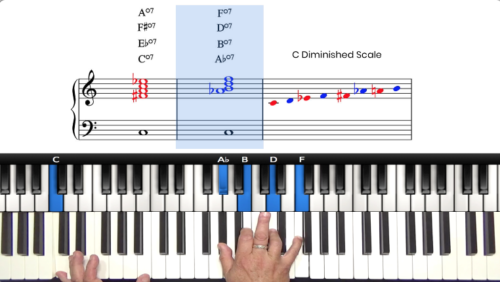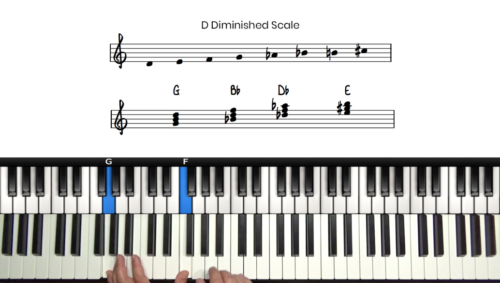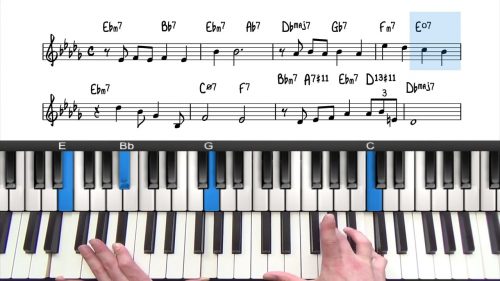Improvising Over Diminished Chords
In this lesson we explore colour tones for diminished chords. Improvising over diminished chords can be challenging for new jazz piano students and so in this lesson we explore simple but effective ways to create improvised melodies over diminished harmony.
The Anatomy Of The Diminished Chord
We start by analysing the diminished chord and its primary chord tones 1-3-5-7. We then explore the symmetry of the diminished chord in terms of the repeating minor 3rd intervals and finally we examine the diminished scale which is a repeating pattern of whole and half steps.
Diminished Chord Arpeggios
In the previous module we explored a number of fills and arpeggio patterns which stick exclusively to the primary chord tones of the diminished chord which are 1-3-5-7. Whilst these arpeggios are effective, we do have other options.
Diminished Colour Tones
There are 2 beautiful colour tones that we can add into our diminished voicings and also target in our melodies, fills, and improvisations. These tones are the natural 9th, and the major 7th. For the Bbdim7 chord, the natural 9th is the note “C” and the major 7th is the note “A”.
The major 7th seems like an unusual tone to play over a diminished chord, but as we analysed, the major 7th is a diminished scale tone and adds a lovely character to our diminished chord voicings.
Lesson Downloads
-
Diminished Chord Colour Tones File Type: pdf
Practice Tips
-
Start by playing a diminished spread voicing over 2 hands with the chord tones evenly spread out such as root and 7 in the left hand, and 3 and 5 in the right hand.
-
Next, add the major 7th colour tone on top of this basic spread voicing and listen to the additional colour and texture that is added.
-
Repeat the same process but for the natural 9th and listen to the additional colour and texture that is added to the voicing.
-
Once we can visualise these tones, we can then target them in our improvisations to add interesting textures and colours from the diminished scale.
-
Experiment by targeting these colour tones with chromatic and diatonic approach patterns as well as enclosures as we explored earlier in the improvisation module.








